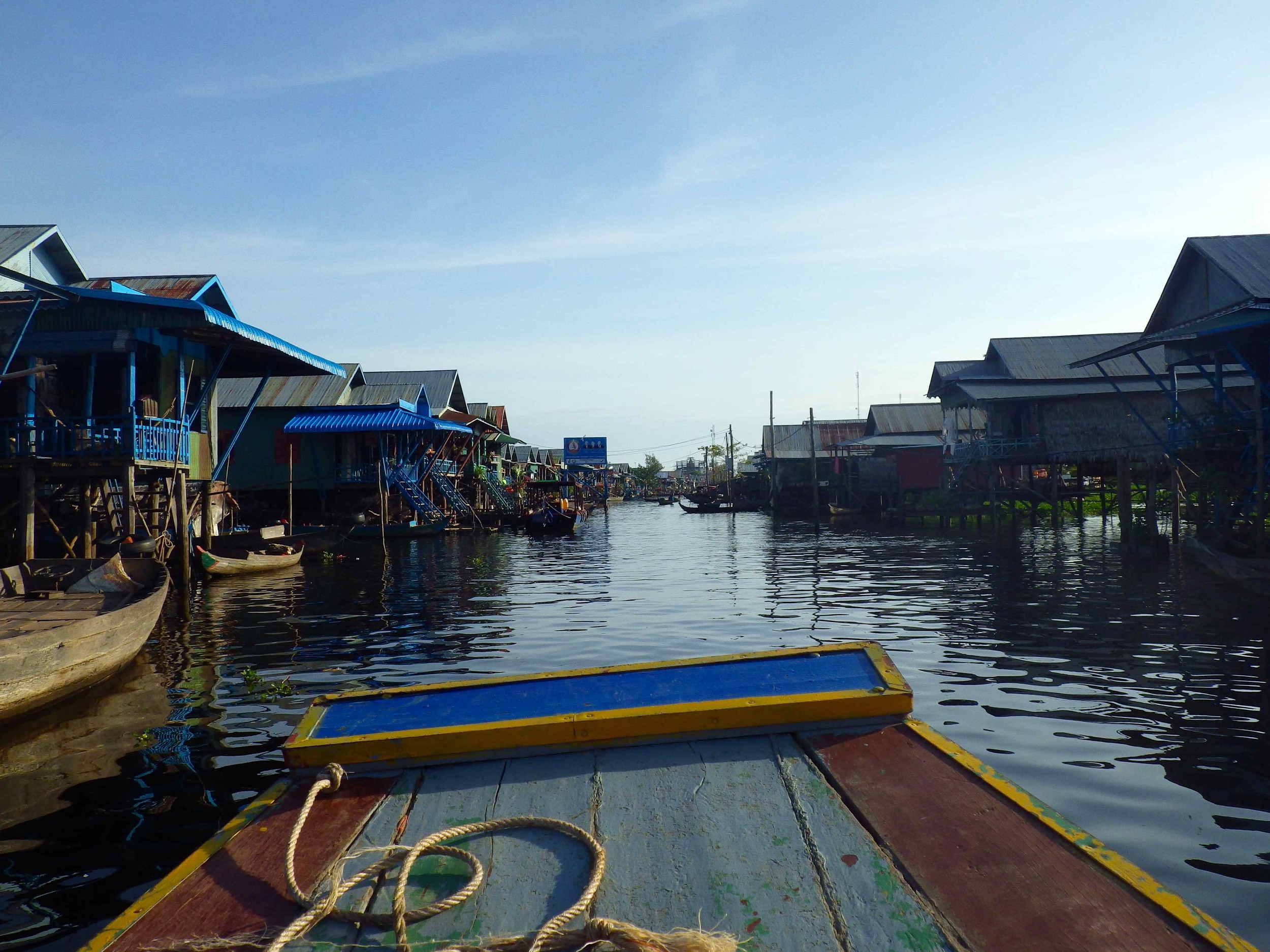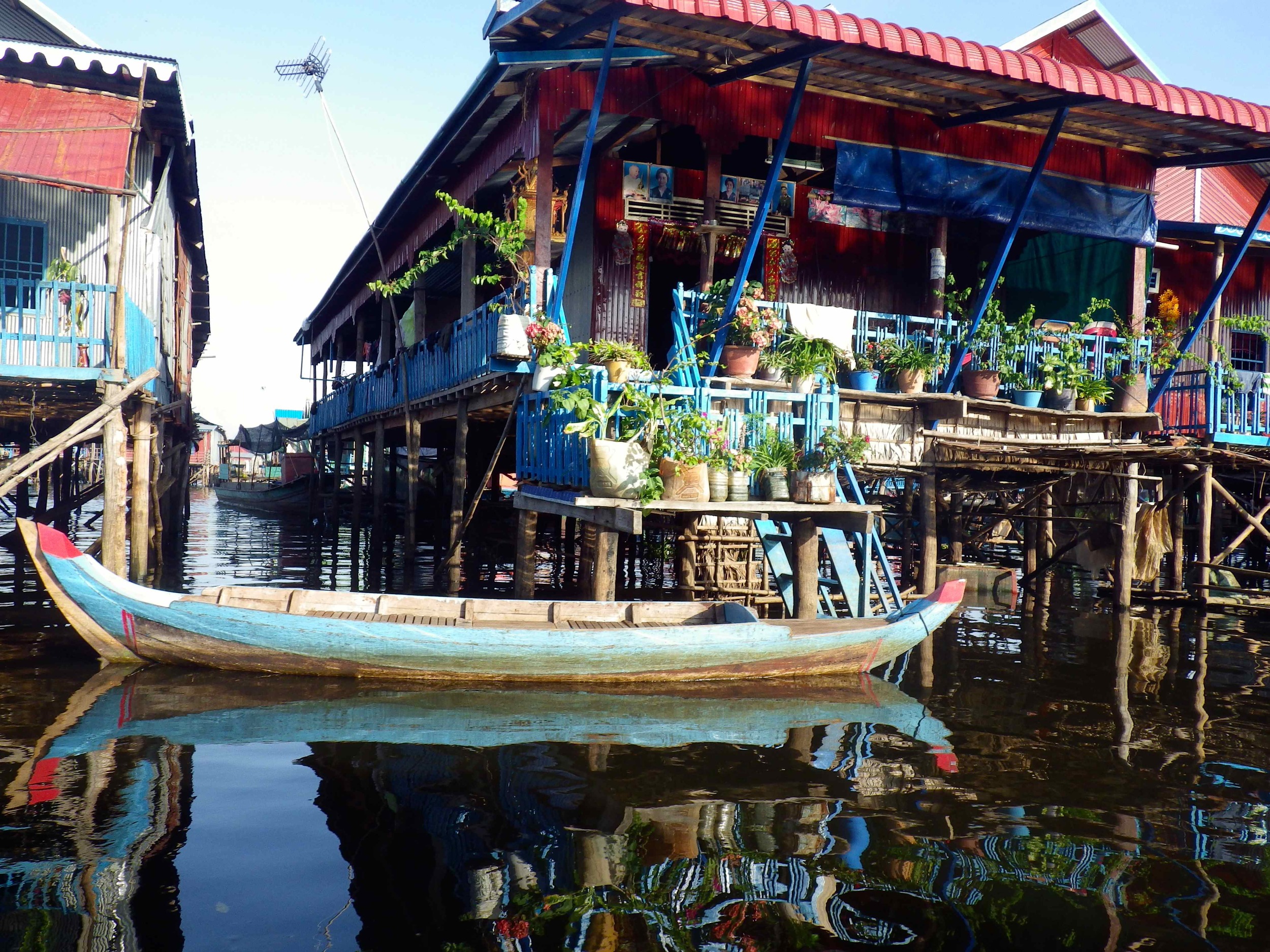On the third day of touring we visited temples on the outskirts of Angkor Wat: Lolei, Preah Ko and Bakong. Following so many breath-taking temples, these older sites were not nearly as impressive or well maintained. As some of the oldest temples they were still other-worldly and James had fun taking video footage with his "slider". The camera slider added a cinematic sophistication to the shoot and Davy was quick to help James. So the guys held court at the corners of the temple sites, patiently filming in high-speed and regular footage, while I wandered around the temples.
After seeing all three temples we drove to Kompong Luong, a floating village on the Tonle Sap lake, with a pre requisite stop at a Crocodile farms. At the farm I felt a combination of fear at the sight of so many large crocodiles in one place and sadness. It really did not look like a very happy life. The enclosure was made from concrete with a dirty pool in the center overcrowded with crocodiles and much snapping when one of them felt like changing positions. Though I’m not sure what a happy crocodile looks like I felt really sorry for these guys, who are bred to be bags, belts and shoes one day.
We arrived at the ticket office for the lake community where there were lots of local people with long boats waiting. We bought our tickets and were assigned our own large boat just for the three of us. This is the general practice with all boat tourism in south Asia - one group (or alone if you are by yourself) to a boat in an effort to spread profits to more boat drivers but from an environmental perspective it’s awful! We never once passed a boat full of people; it felt like such a waste of fuel and senseless pollution.
The ride began through a vast mangrove forest, which was such a beautiful sight! Kompong Luong is made up of a few villages, with a community of about 3000 people. The village we saw consisted of several long rows of wooden buildings built on stilts above the water, which they can elevate (or move down) as the water levels change. During the rainy season it can be as high as 30-35 feet. There are also floating homes, which are towed to deeper parts of the lake that will still have water in the driest season. The community had a schoolroom for young children, a temple and a small market area. Most people appeared to buy goods from boats going dock to dock with everything from fresh vegetables to shampoo. Fishing and tourism is the only income for these families and it was clear how incredibly fragile their way of life is. The community is extremely poor and though this was not like one of the more exploitive tours I'd been warned about, at times I felt unsure if it was appropriate or even harmful for us to be there "eco-touring". I choose to see it as an opportunity to visit a very different lifestyle, dependent on a incredible ecosystem which is vital to all of Cambodia. (The WCS cites fish from the lake as 60% of Cambodia's overall protein intake!) This particular ecosystem is threatened by rapidly changing environmental conditions, as well as over fishing by commercial farms (not locals) and communities receive very little support from the outside world except for tourism dollars.
To learn about Tonle Sap conservation initiatives by the Wildlife Conservation Society: http://programs.wcs.org/cambodia/SavingWildPlaces/TonleSapLakeFloodplain.aspx#.U2f_CRaEzzI
James Isaaks latest magical video features music by the talented Matt Saladino. Check out more of Matt's music at www.wavesandwaves.com
















